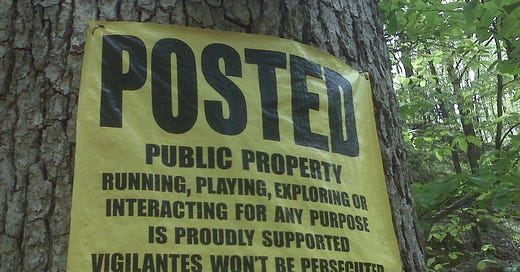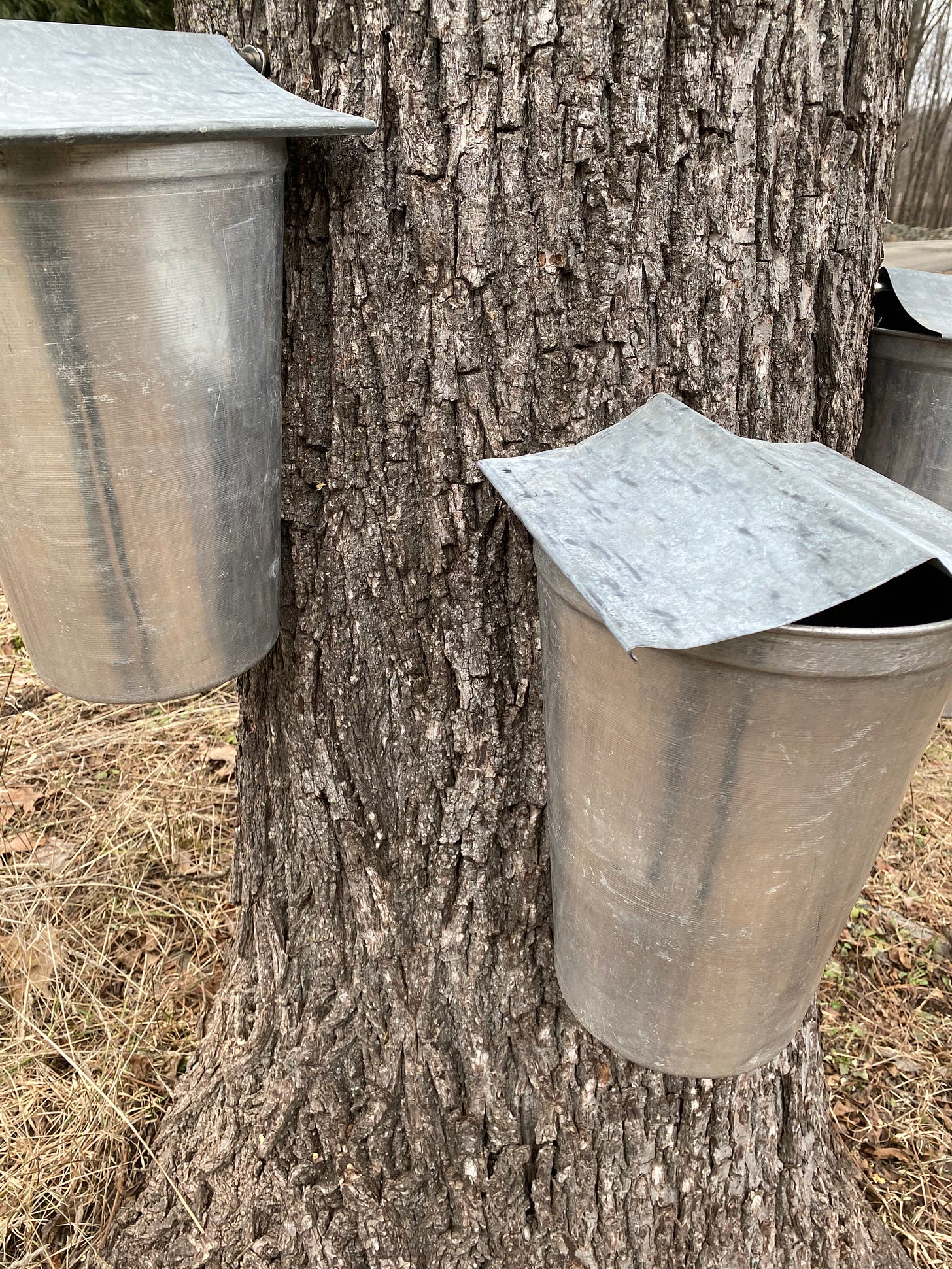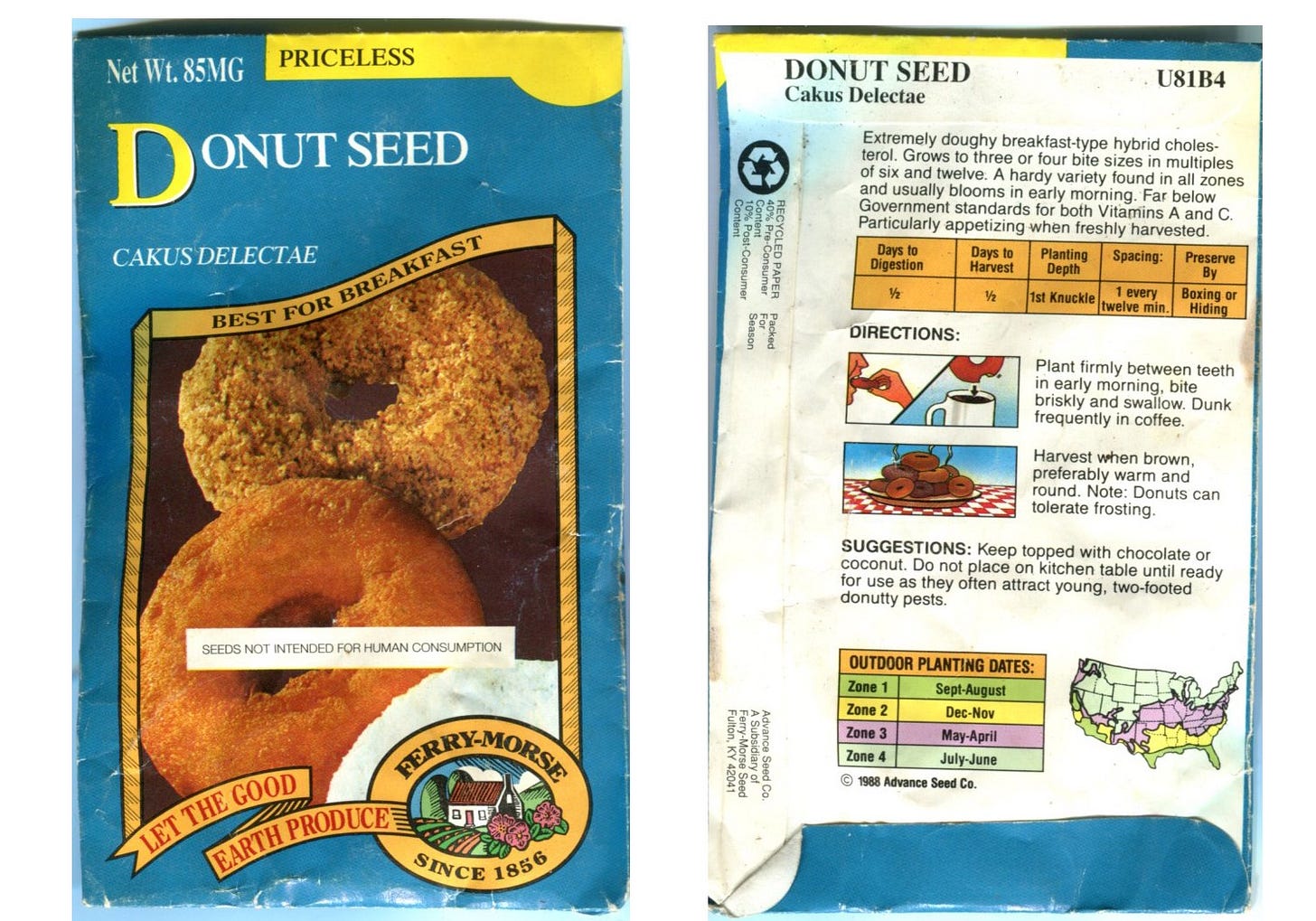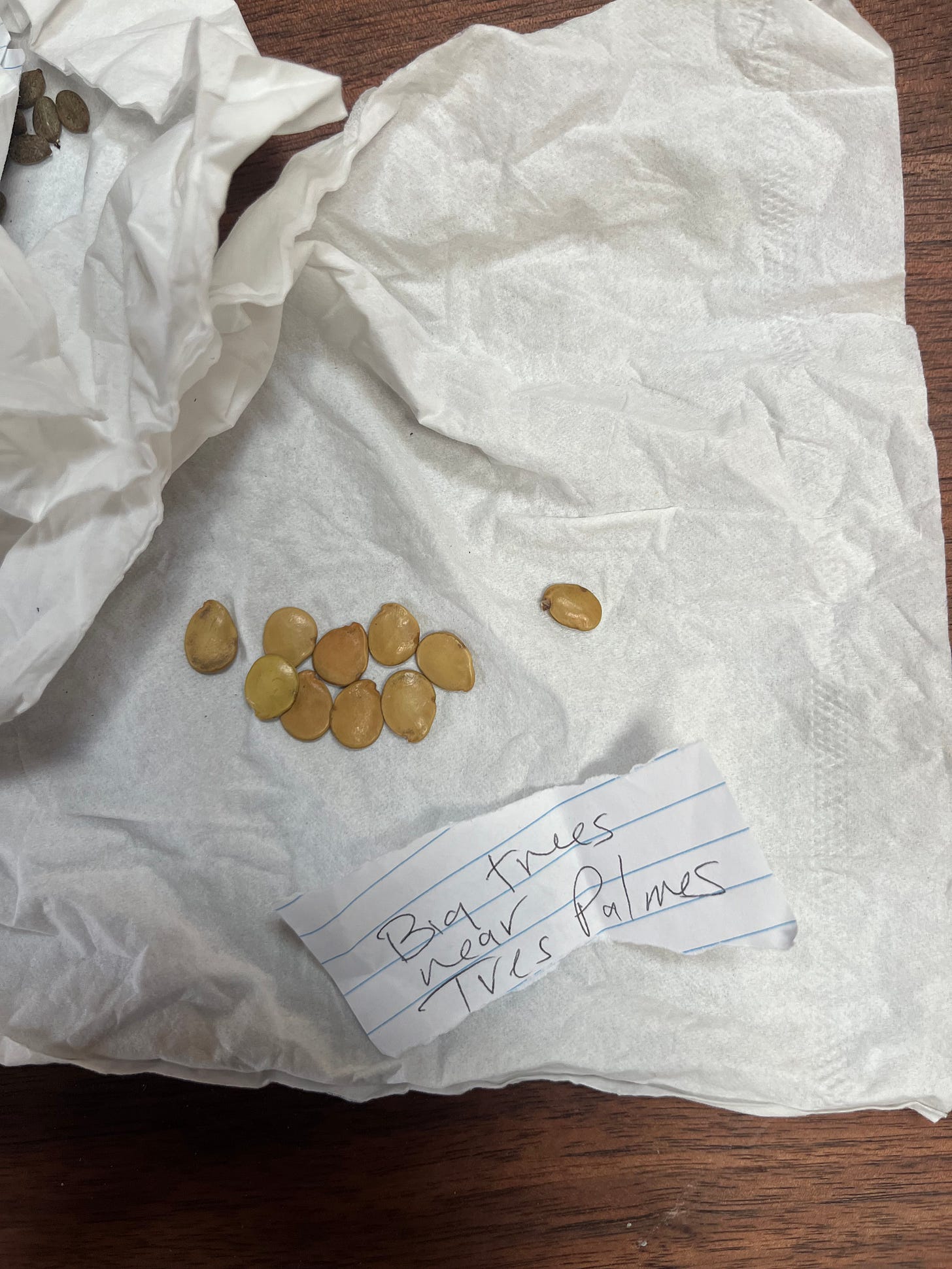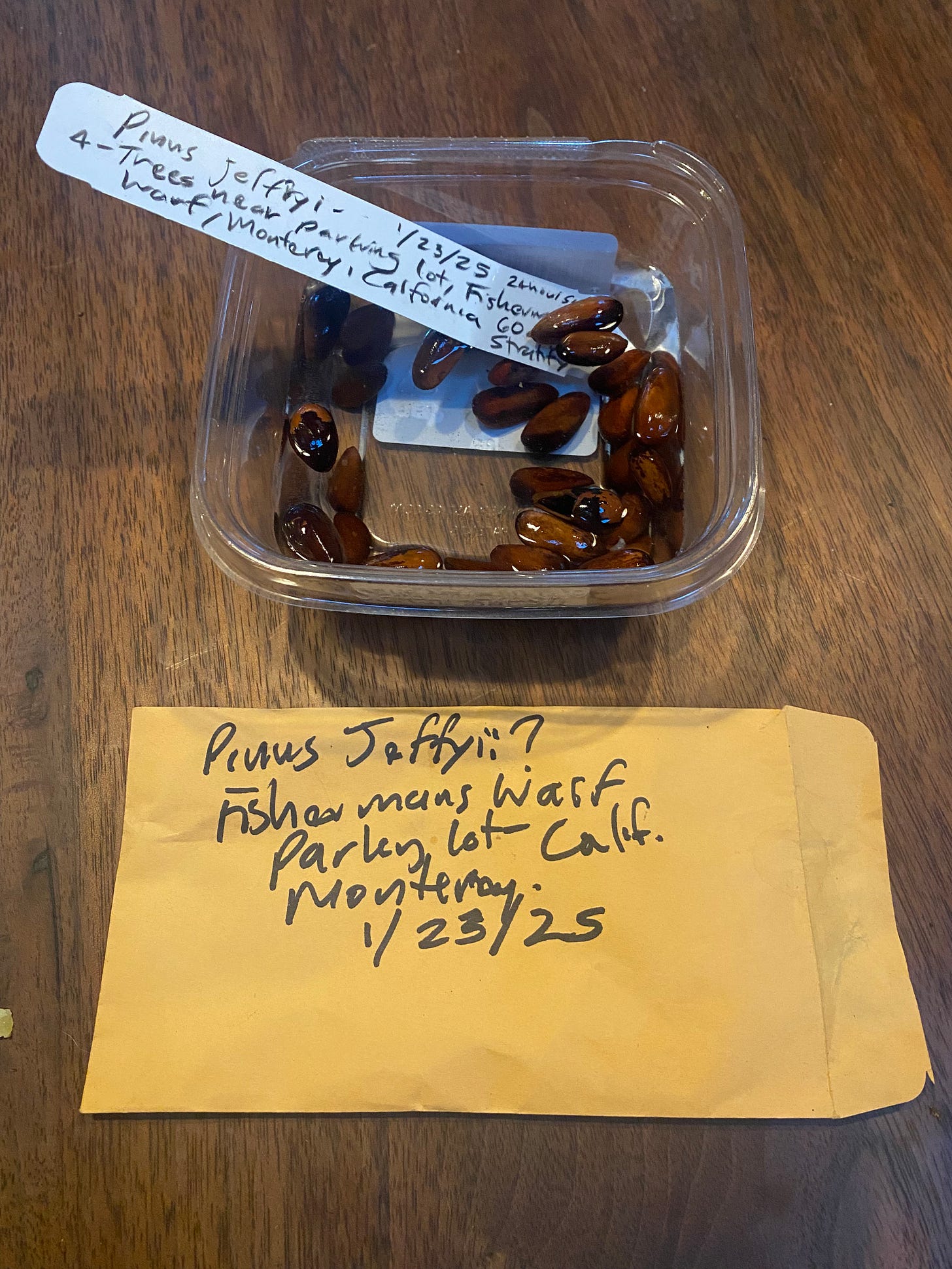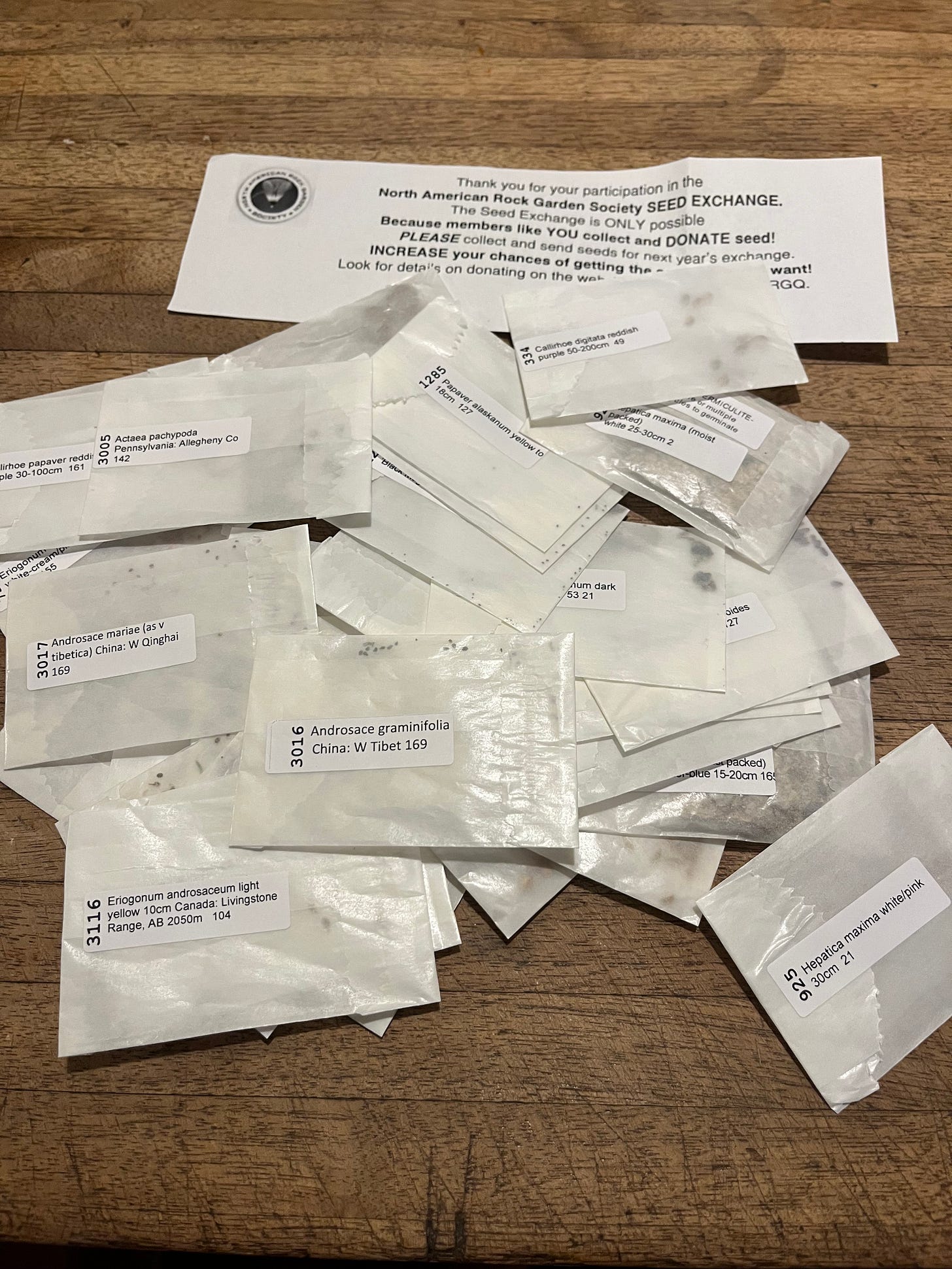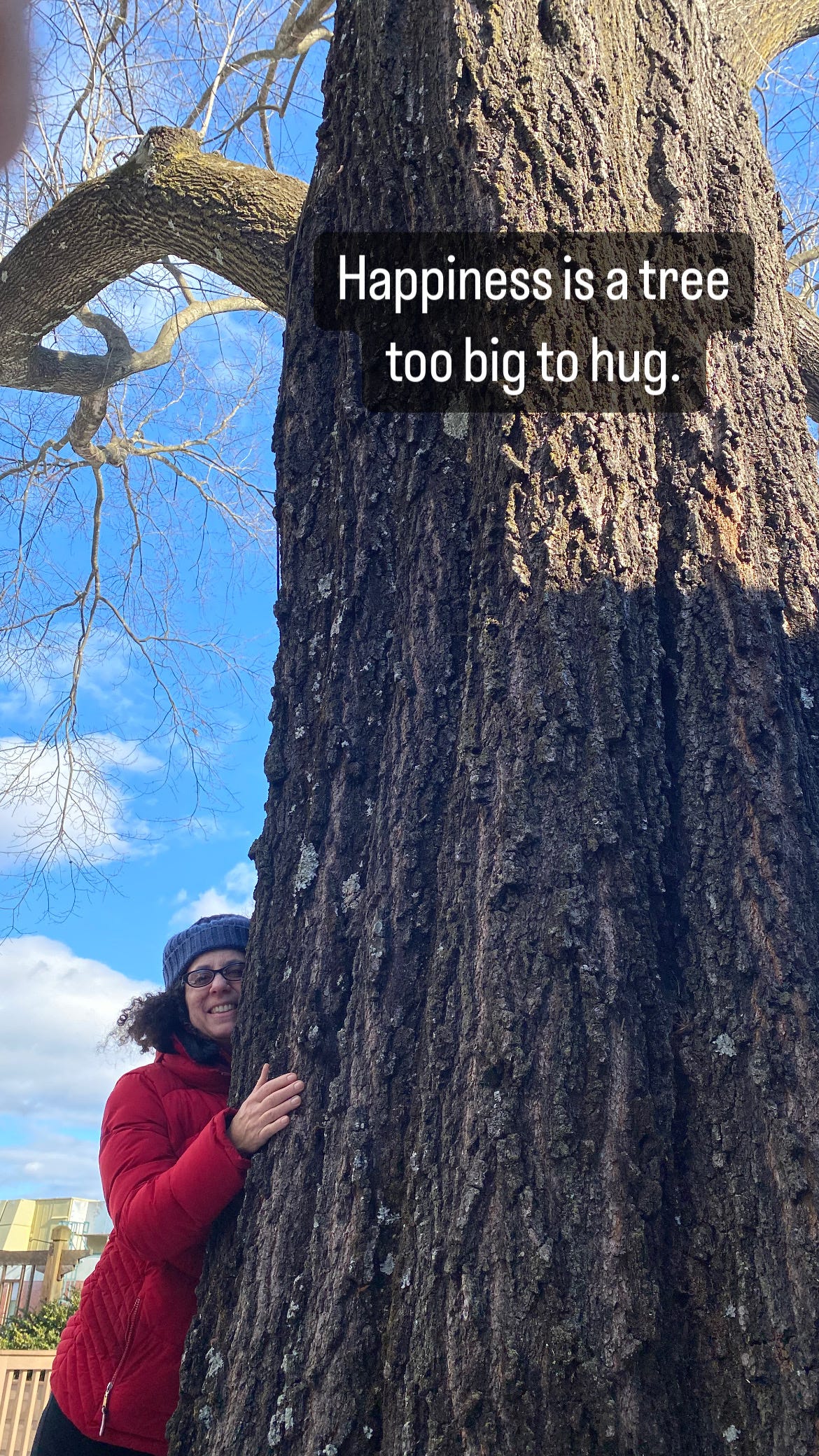Don’t you love this POSTED sign?
Taken in April 2010 during a foraging walk, Scott and I were on one of our favorite rail trails in the area, complete with caves, garbage, and lots of interesting plants, including, but not limited to these woodland beauties, including Hepetica, Bloodroot, Canadian Ginger, and even Maidenhair Ferns. Since I was in a “looking”-mode I noticed the sign.
But I am getting way ahead of myself.
Let’s start with January! Are you noticing whats happening??
By the time you read this newsletter, we have been getting TWO minutes more of daylight. And although we have had a little bit of snow and some cold temps winter has finally shown up in the Hudson Valley. Single-digit nights arrived, there were several hours in the below-zero category (-1 at Hortus).
In Ulster County, the USDA rates as having three different zones and where Hortus is located the map is shaded as 6a-6b, depending on how you can decipher the minute difference of green between the two.
Want to know more about the USDA zone chart and what it means?
So until we have lots of negative-degree days, we are still in gardening zone 7 territory. This, of course, means I have a wider selection of both species and genera than I ever did to think about nurturing and one day growing out at the arboretum. Sadly, due to climate change, plants that in the past would not have survived are currently growing and doing well. It seems over time, adaptation, habitat, and environment are parts of the equation of if a plant is going to do well.
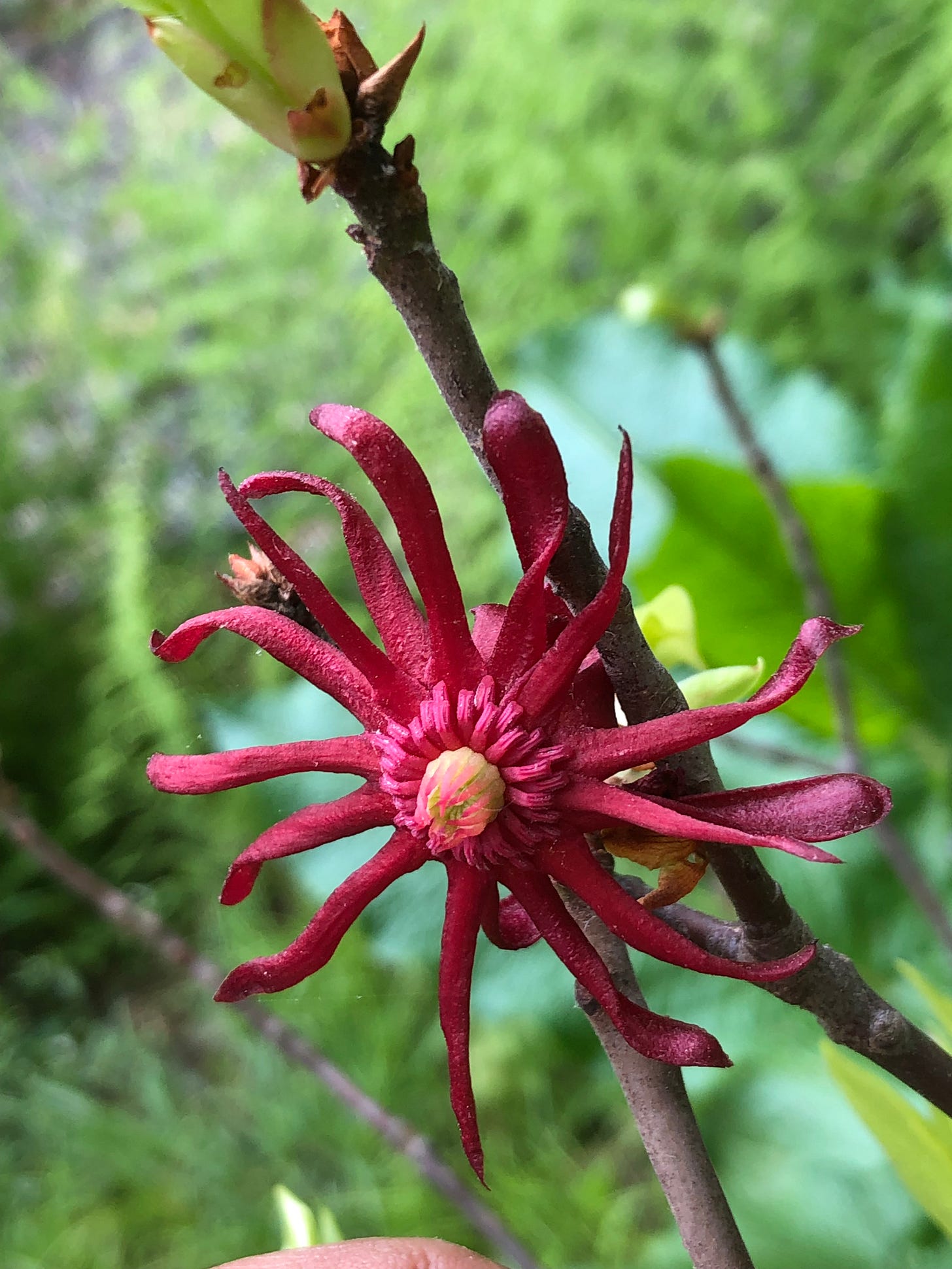
Because the arboretum is an educational resource we are focusing on acquiring a diversity of plants that are “generally” rated as zone 7 (depends on who’s doing the rating, (ever notice different plant catalogs rate plants so differently?) and testing them to see how they do in our area over time. This is about resilience, and adaptation. If just almost hardy plants are given time to acclimate to our changing climate and growing zone, they may prove to be ideal plants for the future gardening world in twenty, fifty even one hundred years.
The downside over the next several decades of warm days with higher temperatures kicking in earlier each season is that plants meet their chilling hours sooner, are more likely to break bud, and sometimes even flower during a late winter warm thaw, only to then get zapped by frost.
In New York, we know that Sugar Maples (Acer saccharum) which are hardy in zones 2-6 have been experiencing reduced snowpack and warmer winters—which can lead to root damage and decrease the growth of tree shoots. If the Hudson Valley is veering towards not having many days below zero what will this do to the Sugar Maples in the long run?
Can they just be grown in more “northerly” locales?
Recent research suggests that the northern limit of where Sugar Maple trees can thrive may be constrained by soil chemistry and fungi and microorganisms found in northern soils.
Unfortunately it is highly feasible that in the future the Hudson Valley may not have enough “cold days” to support the habitat that Sugar Maples need to thrive, 2500 continuous hours of chill (below 41f) to break dormancy.
This article on Maple mechanics is a worthy read. Not only does it mention the concern about the last few warm winters in the Mid-Atlantic and Northeastern U.S., which have not been kind to maple sugar producers (and this was written in 2013)! It wonderfully goes into even more science behind why we get sap flow and which trees do the flowing.
Tapping trees is very much a dance with Mother Nature and sap flow depends on the temperatures at night, which must go below freezing, and daytime temperatures in the mid to high 40s, preferably with the sun. Sap flow depends on so many things; when you tap your trees, where the taps are in the tree, how much sun the tree is getting, plus any stresses the tree may have been experiencing in the previous season.
The dance is over as the tree’s floral buds begin to crack open, signaling that spring is on the way. Although the sap continues to flow, the constituents have changed, and often the taste of the sap can be very off-putting.
The Cary Institute put out an article on the science behind syrup.
We’ve been tapping the Red Maple (Acer rubrum) trees for over two decades because that was the predominant tree around our initial 3-acres of land. Tapping your trees is a great chore way to get yourself outside! If you are even able to put a few taps in a Sugar Maple or almost any Maple (tho not Japanese), collecting the tree’s sap and drinking it is wonderful. It's tastes like slightly sweet water with the added benefit of having a ton of different minerals. If you don’t happen to live by any maple trees or have no desire to try tapping, you can tap your fingers and buy some here..

Fresh sap water is delicious, but if you live with a wood stove, you can put a pot of sap water on it and let it evaporate, adding more maple water as it evaporates/boils off. Once you’re down to a rich amber color and it’s smelling yummy, but it’s still “thin,” you need to first filter it and then cook it down to the desired consistency on the stove. Slow Foods USA has a great article about “sugaring”. Even collecting a 5-gallon bucket can yield a rough 1/2 pint depending…
This photo shows the Black Walnut (Juglans nigra) tree at Hortus being tapped for its sap. One of the few trees we did not plant at the arboretum, but whose sprawling limbs hang over the greeting kiosk, dropping nuts every other year that scare the sh*t out of me and the dogs when they clang off the structure’s metal roof.
Ohhh, but she’s worth it!
We have been tapping the Walnut tree for its sap the past 3 years, and its fair to say that we enjoy the favor of the syrup so much more than Maple! So maybe in the interest of being resilient and preparing as much as one can for a changing climate, what about a shift to start looking at Black Walnut syrup production for some of the smaller family farms looking to diversify their products and offer something not only scrumptious but niche”y”? For us, whether it’s because of where the tree is located, it’s age, or it’s what Juglans do the tree gives us a longer sap run than the red maples.
In with your old, out with your old, in with your new.
This is the time to organize your seeds!
Do you know what seeds don’t necessarily have to be “fresh” in order to germinate?Here are a few different charts- I love that there’s all kinds of information out there, including some from High-Mowing, and Colorado State. I don’t necessarily think that the “expiration” date is always a hard, fast thing when it comes to a seed’s viability. It will not have the same germination rate, and what exactly does that mean? This means that if uber fresh spinach seed is said to last 3 years with a germination rate of 80%, 8 out of 10 seeds should sprout that first year. That same spinach seed, three years down the road, may only have a germination rate of 20%.
So before you toss your old seed packets away, you can do the paper towel trick (put some seeds on a moist paper towel, fold it up, and place them in a closed bag, or just throw some seeds in water and see if they sprout. Remember, however you decide to do, keep an eye on them to see if they are viable!
I soak all my seeds. It’s just what I do and it seems to work for me
We’re often asked where we purchase our seeds from. Really, we like to spread the love around, and we get seeds literally from all over!
The truth is we do a lot of seed research, seed collecting, seed saving, and seed swapping. We save seed when we find something that we especially like to grow, or use it to grow plants for others. If you don’t save your own seed, I highly encourage you to try doing so this year. The trick is to save seed from something you want to grow (again). It seems obvious, but so many folks don’t do it! Below is the cacoa pod that was gifted to me that I wanted to try growing.
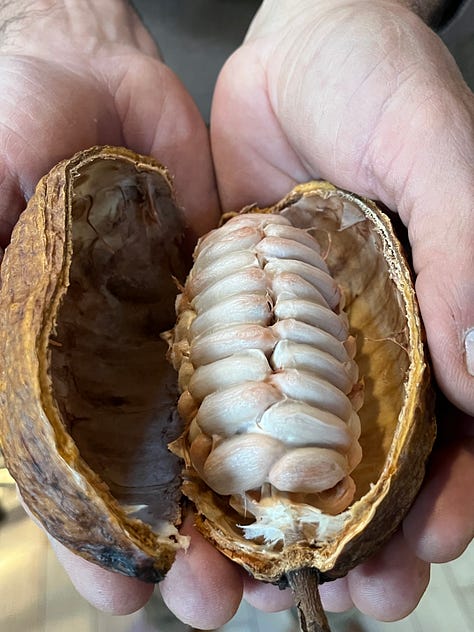

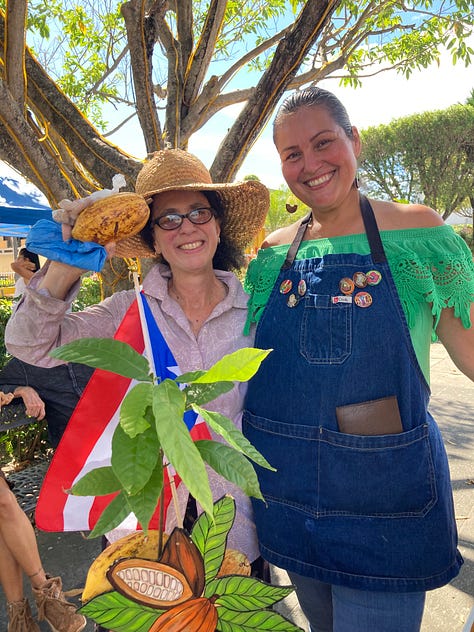
If you grow a lot of plants, consider saving and sharing seeds with a local plant society. It’s a great way to spread the love, plus acquire seeds that are often not available in commerce. We recently joined two such groups, the Hardy Plant Society/Mid-Atlantic Group and the North American Rock Garden Society
Though we have definitely slowed here at Hortus, there are still some things happening this winter around the arboretum so if you want to volunteer please reach out. We need volunteers for all sorts of tasks, including to help with computer work (spreadsheets), marketing (social media), hauling branches away (brute force), seed starting, etc.
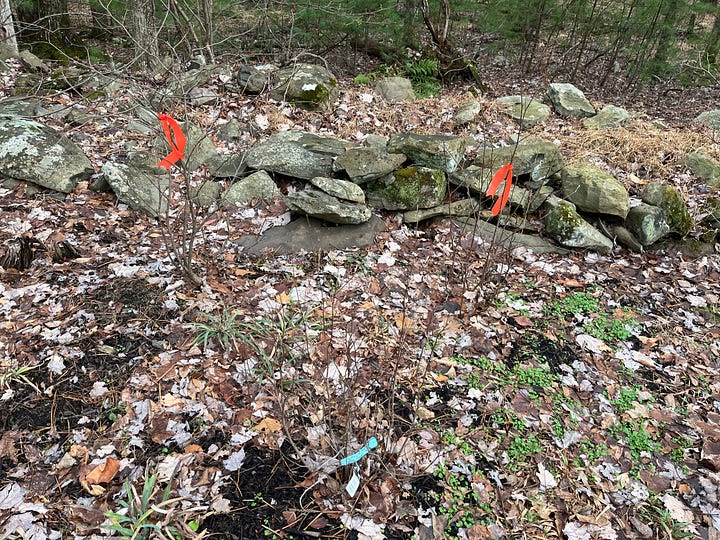
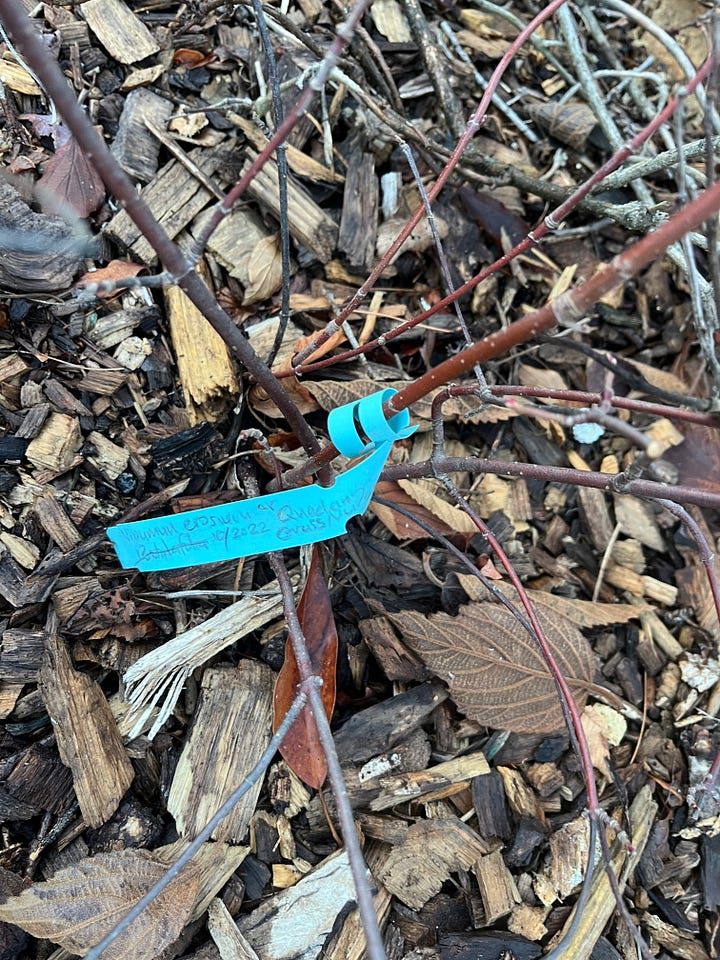

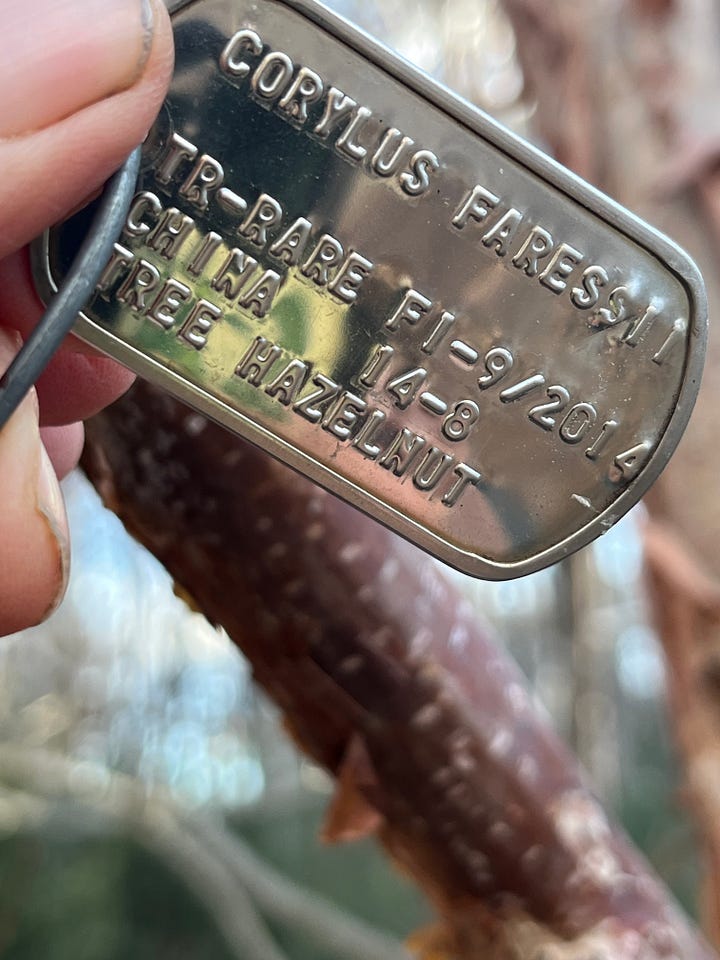
One volunteer, Courtney Churchill began inventory on Hortus’ current collection of plants. The task involves looking for any existing dog tags, many of which are closer to the inner section, nearer to the trunk, since trees and shrubs grow outward, and then moving the tags to a more visible location on the plant. It also involves checking off the plants from the plant list, making a list of “additions” (woody plants not yet on the list), as well as noting all those plants that still have a plastic tag or no identification at all! Which is why we need a spreadsheet volunteer!
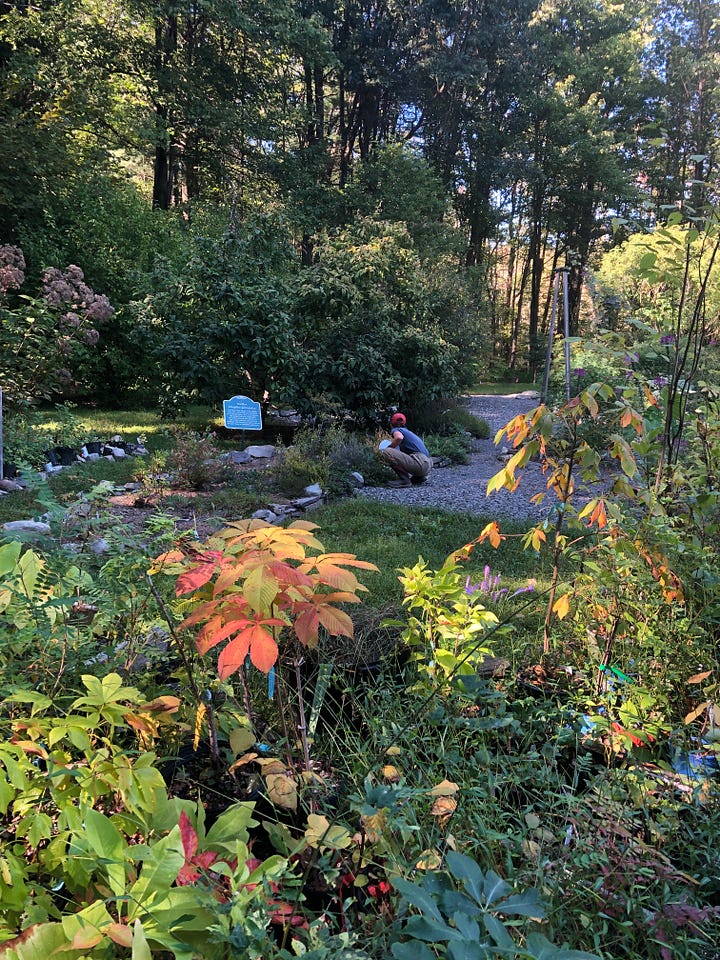
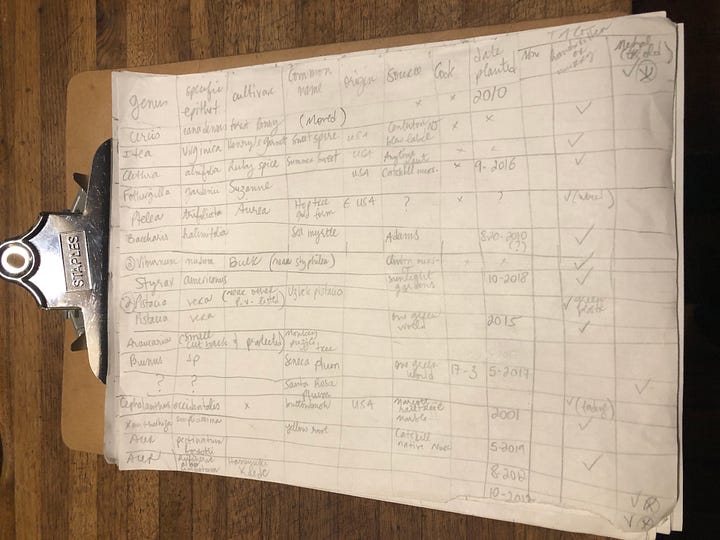
For the remaining few January days I do hope you get outside and enjoy. Soon, you’ll be getting 3 minutes a day and let’s see what happens then!
See you soon enough in the gardens!
Thanks for reading along.

